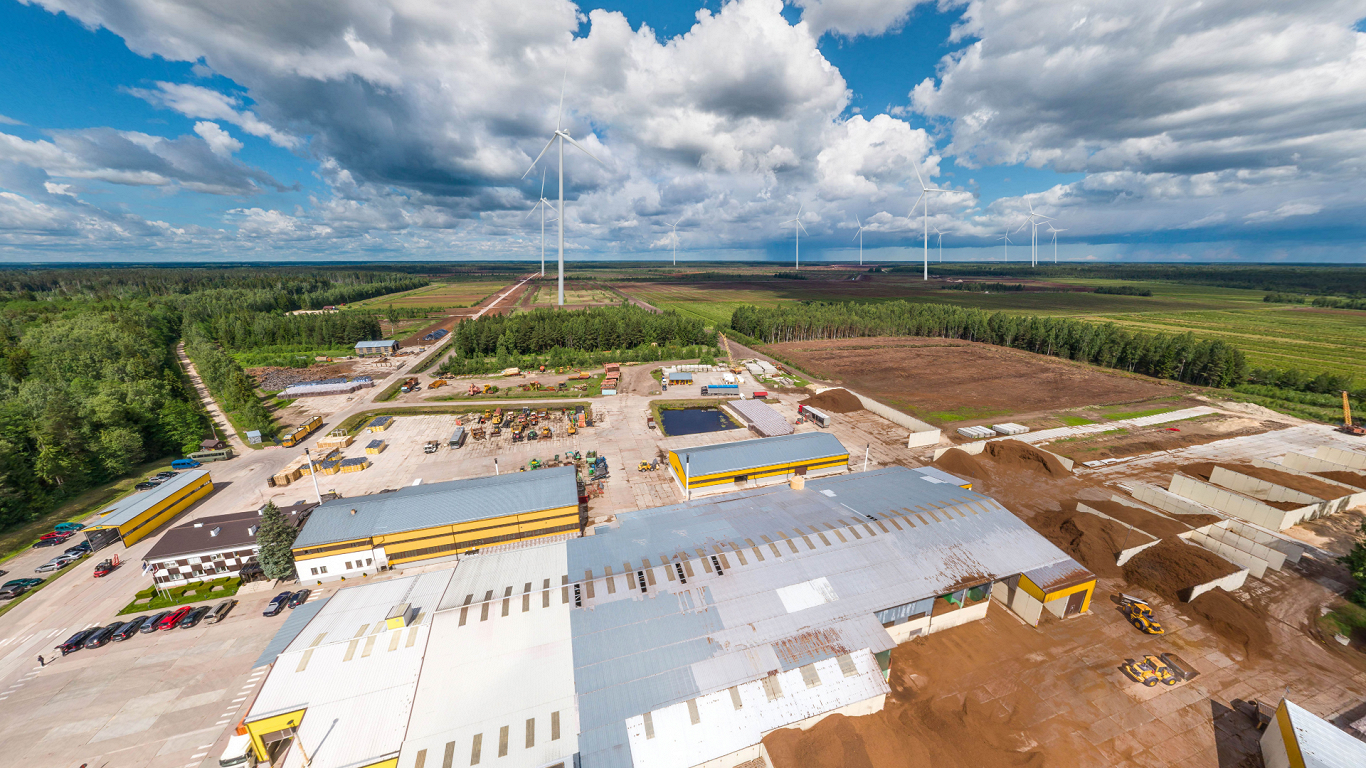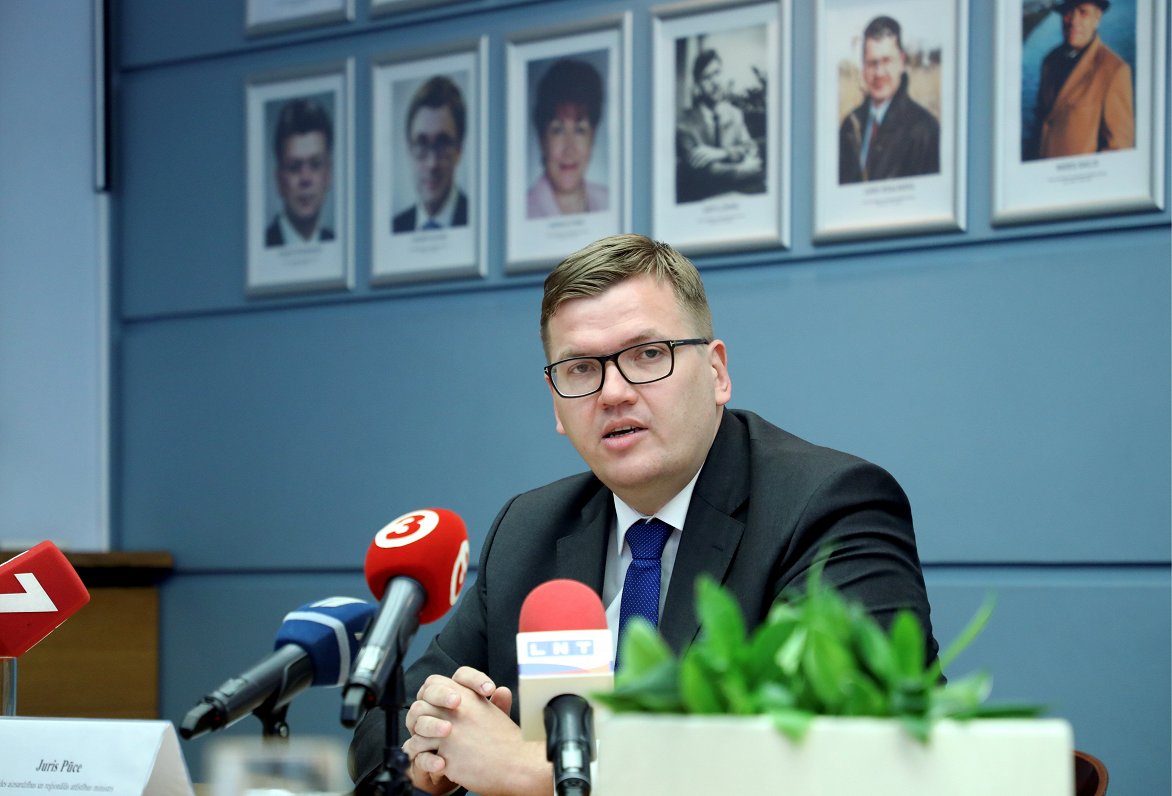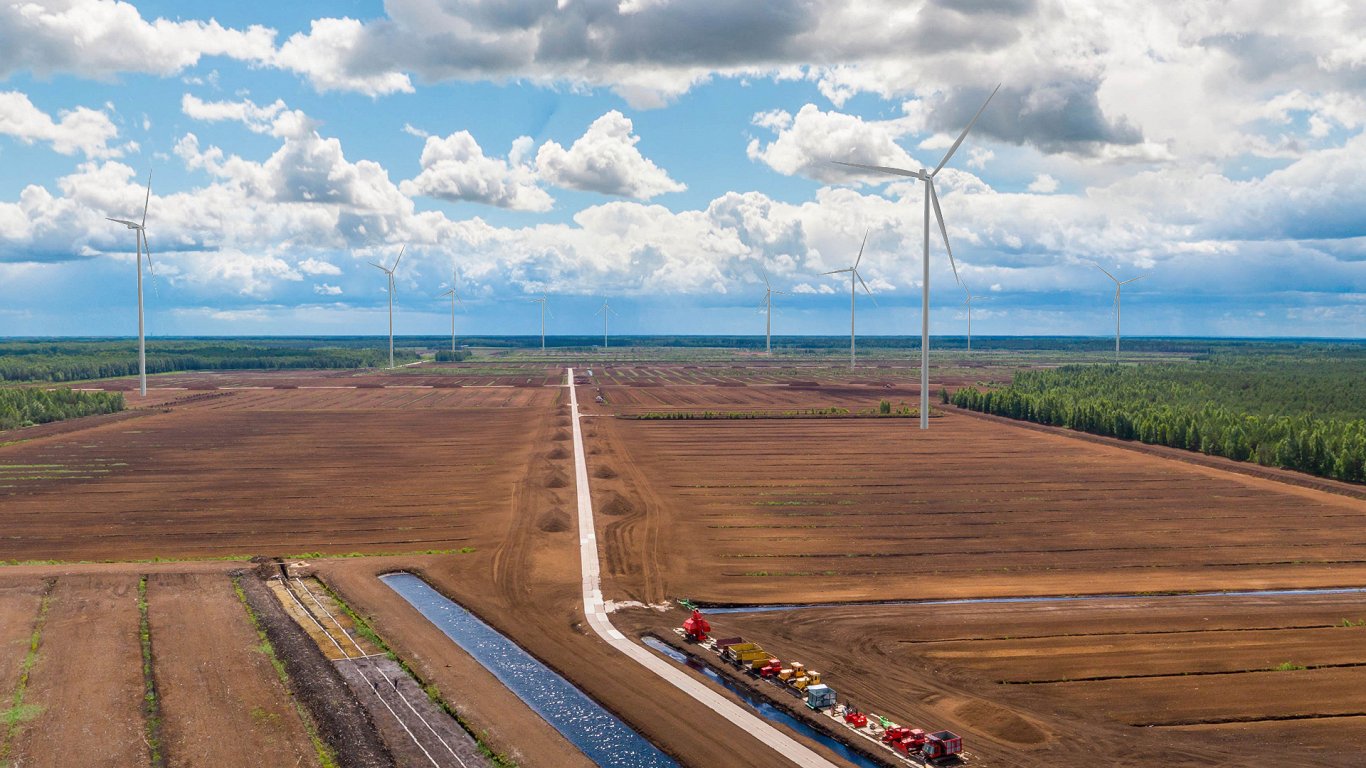From peat farm to wind farm
At the end of February or beginning of March a public hearing will be held to get to a final verdict about turning the Laflora peat farm in the Jelgava district Kaigu marsh into a wind farm, according to a Latvian Radio broadcast on January 22.
"The peat extraction process is nearing the end, and we have to figure out an effective, economic further use. And today we already see that this wind energy, this sector can exist without some sort of subsidies or outside help," said Laflora Board Chair Uldis Ameriks.

They aim to build 22 around 200-meter tall wind turbines in the swamp that could produce about one tenth of the national 2030 goal for green energy. The energy would also be used to power a complex of greenhouses on the marsh territory, as well as compensate for the greenhouse gas emissions during peat extraction.
Laflora has been conducting an environmental impact assessment with the help of international environmental consulting company Estonian, Latvian & Lithuanian Environment (ELLE) experts to assess scenery changes, noise levels, cultural-historical heritage and many other aspects. The assessment concluded that the project can impact society health and nature, more specifically birds and bats.
"It's clear that in both of these aspects the farm will influence both society and nature, however the impact won't be such that the farm should not be banned," said ELLE representative Oskars Beikulis.
As this industry remains yet unregulated in Latvia, government institutions will decide if and how to regulate wind turbine operations. In previous public debates people expressed concerns over the usability of the road cutting through the territory, which covers almost 10 hectares. Construction is planned to start in 2022.
New wind farms needed
Economic Minister Ralf Nemiro (KPV LV) said that state-owned electric utility company Latvenergo should develop wind energy, but that he is not interested in acquiring existing wind farms, according to Latvian Television's morning news broadcast “Rīta Panorāma” on January 28.
According to last year's Latvenergo energy market report Latvia has to develop wind energy generation so that it can make up 45% of final energy consumption. The minister has now confirmed that wind energy capacity must be expanded, at the same time emphasizing that Latvenergo is not interested in old existing wind farms that aren't effective.
“Undoubtedly we're talking about large capacities, new technologies,” said Nemiro.
The 2030 national energy and climate plan calls for renewable resources to reach 45% of final energy consumption. This means Latvia needs to find at least 500 megawatts of new energy, which makes up about one sixth of the total national energy output.
Pūce says pricey
Minister for Environmental Protection and Regional Development Juris Pūce (Development/For!) said that a climate neutral policy will cost Latvia billions, however the cost will be equivalent to those of fossil fuel technologies, according to a Latvian Radio broadcast on January 28.

On the same day the government reviewed the ministry's plan for reaching climate neutrality by 2050. The minister said that he can't be more specific at the moment.
“It's 30 years till 2050, which will see significant technological changes, important innovations specifically in climate economics. There will be many new products, new technology that will help us minimize CO2 emissions,” said Pūce.
At the same time it's clear that we'll have to reject the technology that currently creates emissions, but Pūce doesn't completely rule out firewood heating. The ministry has also conducted cost calculations.
“It's clear that the amounts are measurable in the millions, but compared to the current investment in fossil technologies, it's essentially the same amount. The question is can we change our priorities and going forward develop technology based on renewable resources,” said Pūce.






























